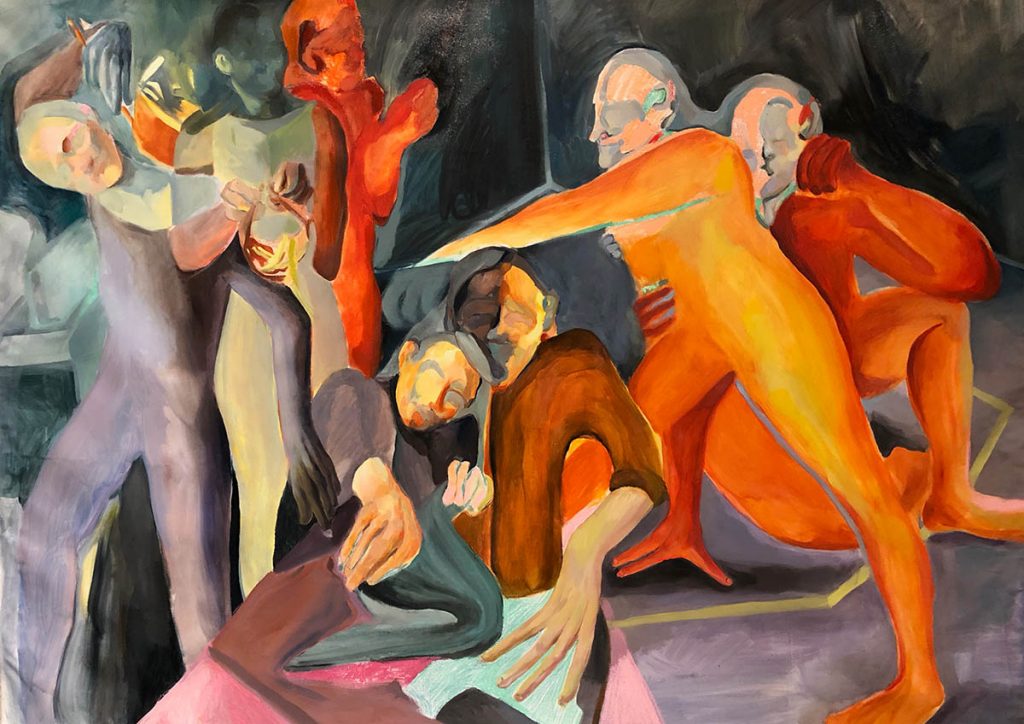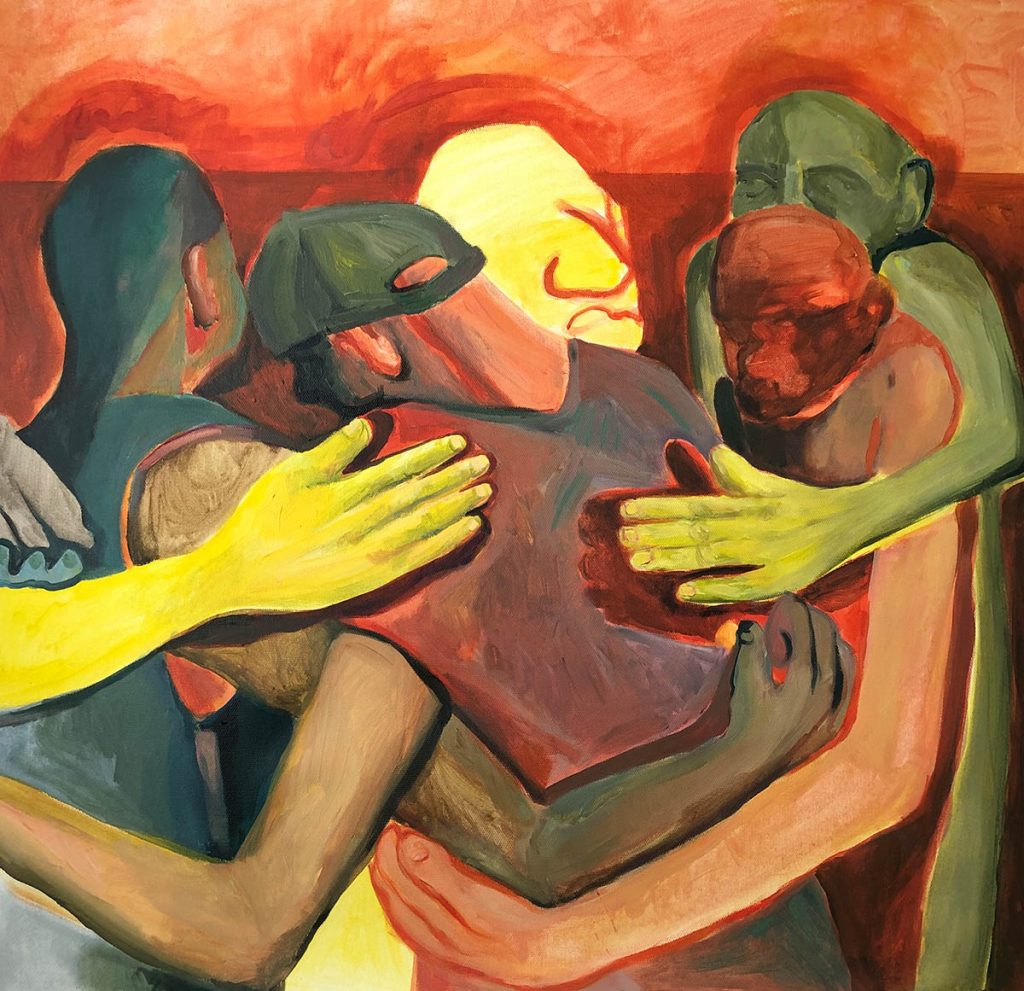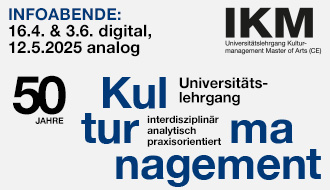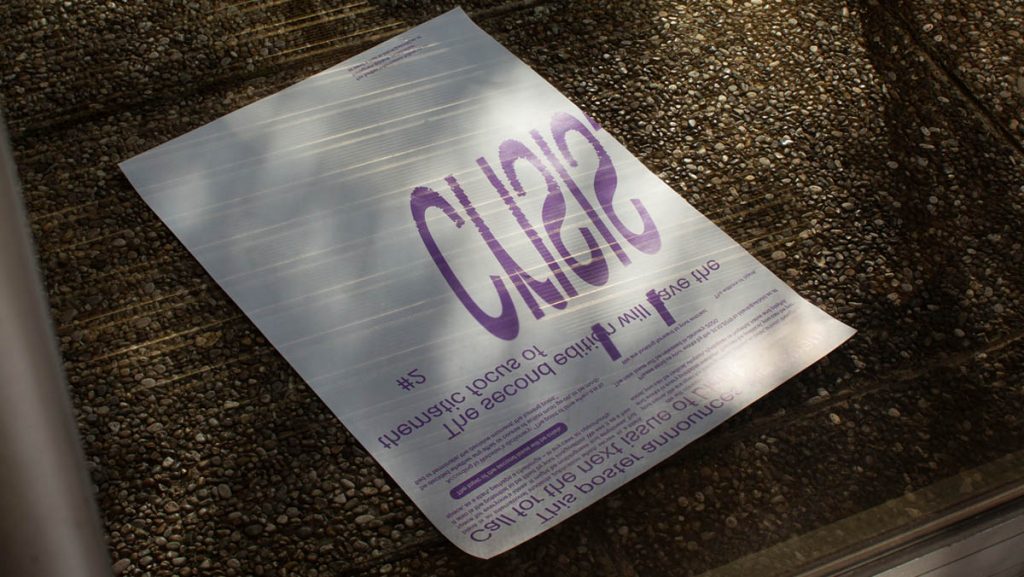
Tell us a little about your background. Why did you want to become a painter?
When I was 15 I woke up one morning and all of a sudden I just knew with a strong certainty that I wanted to become an artist. Back then, all I wished was to translate the growing ideas inside me and situations too complex for articulation into a visual language, and it was enough. Since then the long journey of education, switching institutions, professors, moving to other countries, and finding myself through my practice has begun. Going both through the conventional academic art structure in Ukraine and having so many professors along the way in Bratislava, Vienna, Hamburg with their diverse minds gave me a wide spectrum of the art world.
Humans stand at the center of any of my paintings. Their coexistence, synergy, interaction, their joint collective aware or unaware choreography, random bodily proximity.

What topics do you especially enjoy painting?
Humans stand at the center of any of my paintings. Their coexistence, synergy, interaction, their joint collective aware or unaware choreography, random bodily proximity. It’s something that I simply never lose interest in. I’m interested in the different manifestations of people’s shared, individual, temporary, or inherent movements as a display of current times and changing social phenomena. I’m referring to a similar pattern of gestures obtained as a result of contemporary jobs, or collective switch from the ceremony of behaving in public space or new behavioral patterns due to self-actualization. Because this movement analysis is a big focus of my interest and I’m more analytical in that approach at times, I embed choreographic elements in my works. However, parallel to that in some paintings, I just allude to particular situations, images that take their roots in my life. For example, now I started working on a series called „dreams of a desirable and inaccessible psychotherapist“ where I would describe a therapist as an idealized yet never reachable „petite object a“ transformed into the canvas in all the shapes my mind would need.
However, parallel to that in some paintings, I just allude to particular situations, images that take their roots in my life.
What is your creative process?
I usually begin with a sort of research, or outbreak of a wild interest in some topic, investigation. And when a particular necessity to transform it using my practice arises I start with painting or other media. I perceive art practice, in general, to be closely related to psychoanalysis and personal therapeutic process. Therefore each decision like usage of a specific media, formal and intellectual properties of the artwork are related to very personal impulses. I hope that viewers are able to grasp it on a subconscious level. As for more practical sides, I walk, I read, and then walk again – it activates my brain. I treat painting with an exquisite delicacy, therefore, I would start a new work only when I’m really in a shape for that. However, with time this „in shape“ mode manifests itself on a regular basis.
What is the biggest challenge you’ve faced so far?
To allow myself to paint without feeling any guilt, pressure, or judgment.
Do you know when your work his finished?
When there is no burning sensation inside me to wake up and run to finish, add something to the piece it might mean there’s nothing more I have to say. Unless there’s still space for playfulness it’s not finished.

How important is physical proximity to you?
To be honest, I can’t exist in this new zoom reality. Proximity, communication with people face to face, is of extra value to me. I just want to smell, touch the hair of my friends, and hear their voices next to me.
What are your favorite places in Vienna?
One particular tree in Türkenschanzpark. Also Liechtensteinpark in early may with its blooming lemon trees in pots and the momentary illusion of being in the south. I also love basically all of the food markets, and of course the Schweden Espresso at night with its beautiful Viennese spellful dialogues.
Alina Sokolova – www.alinasokolova.com





